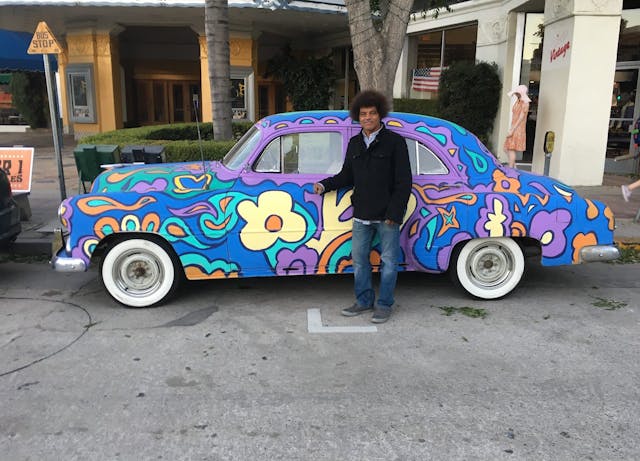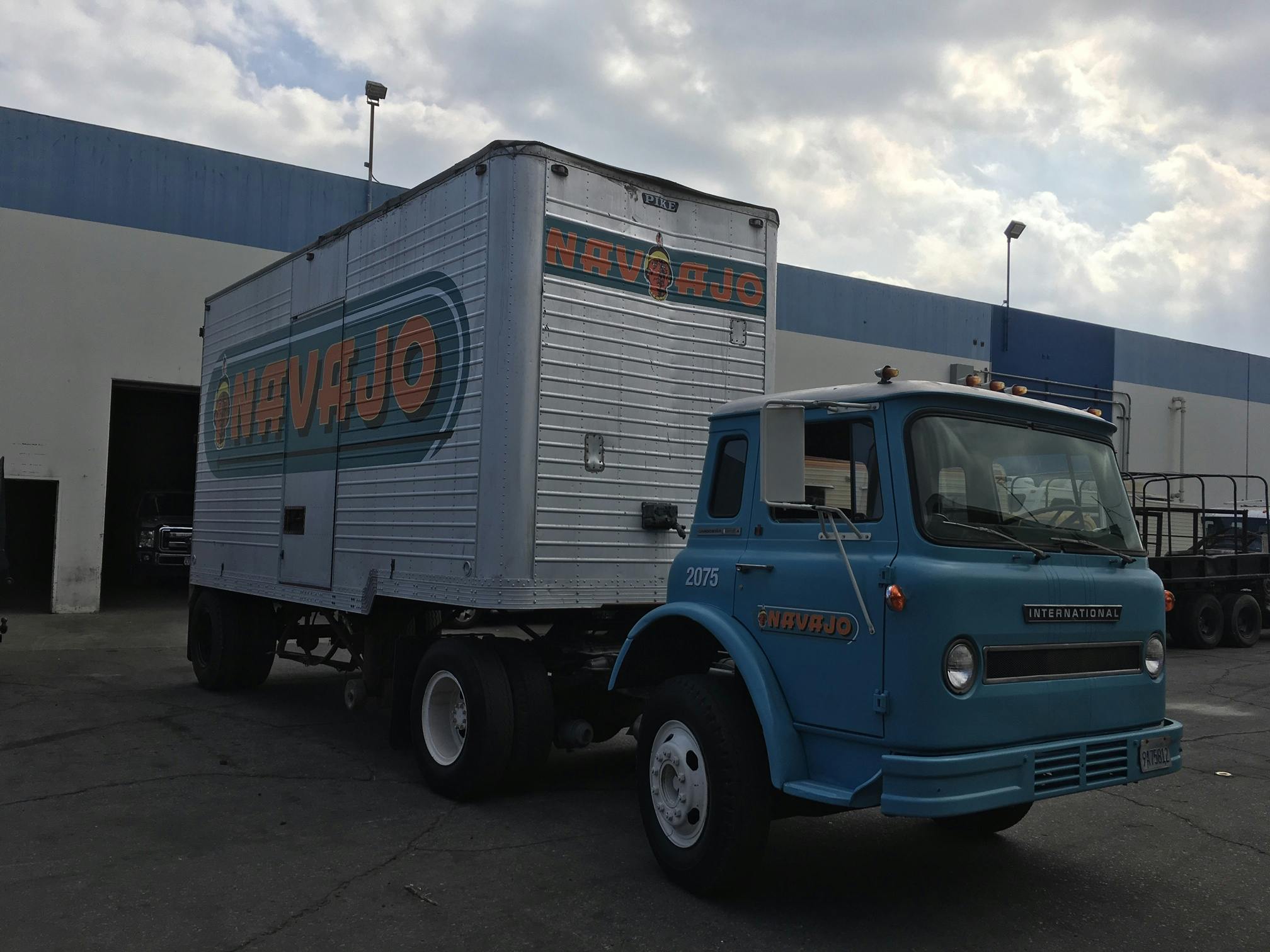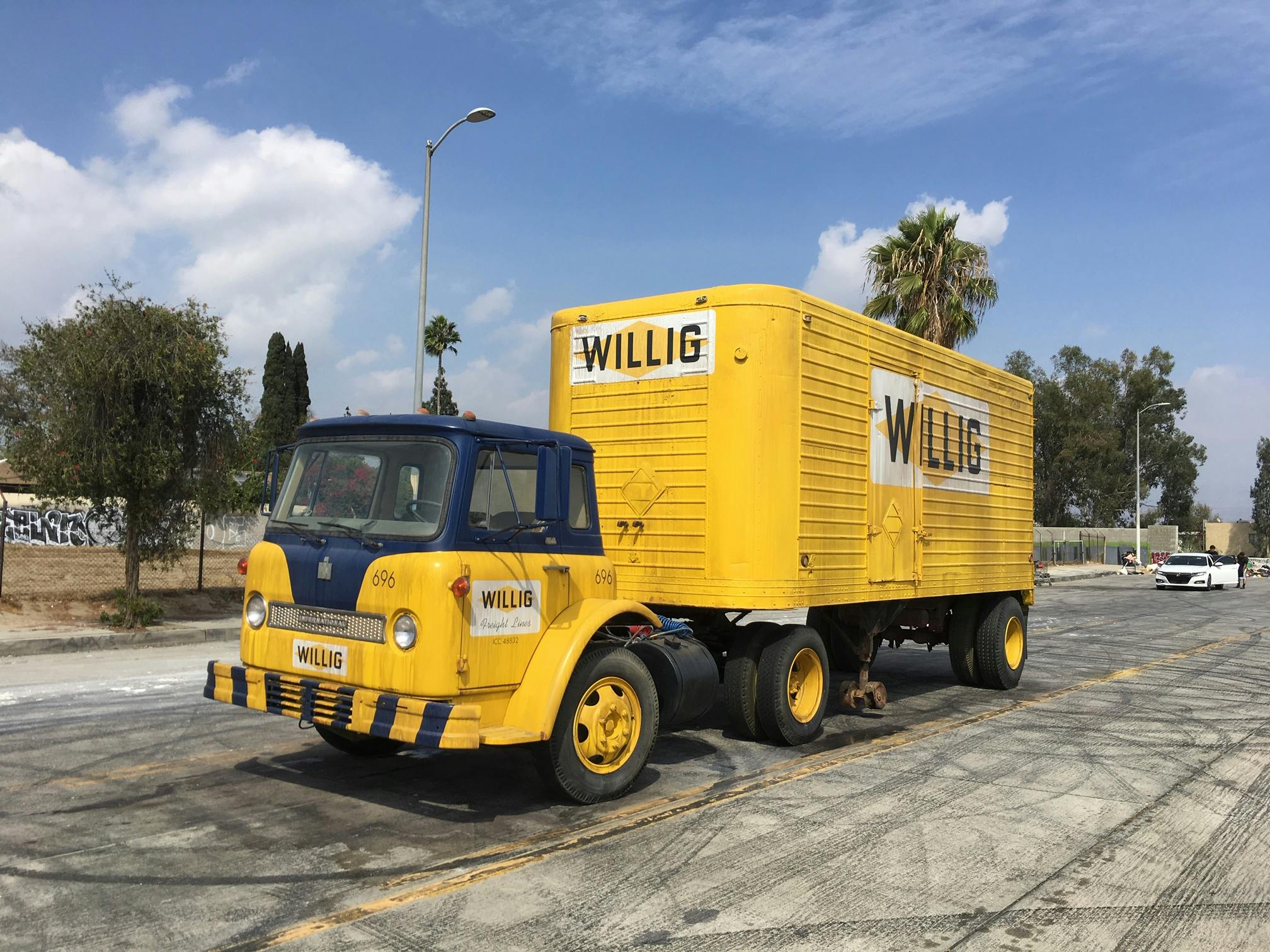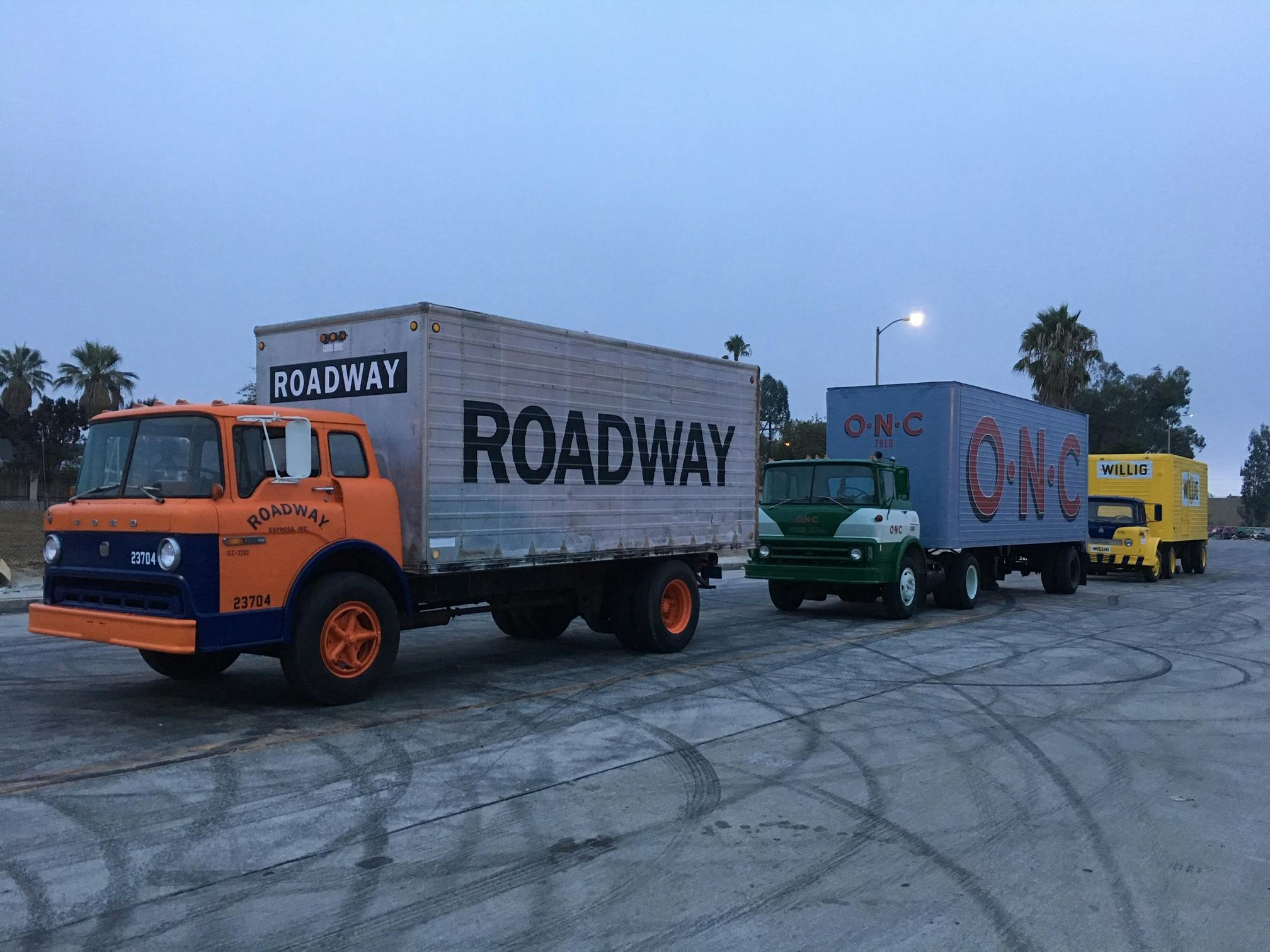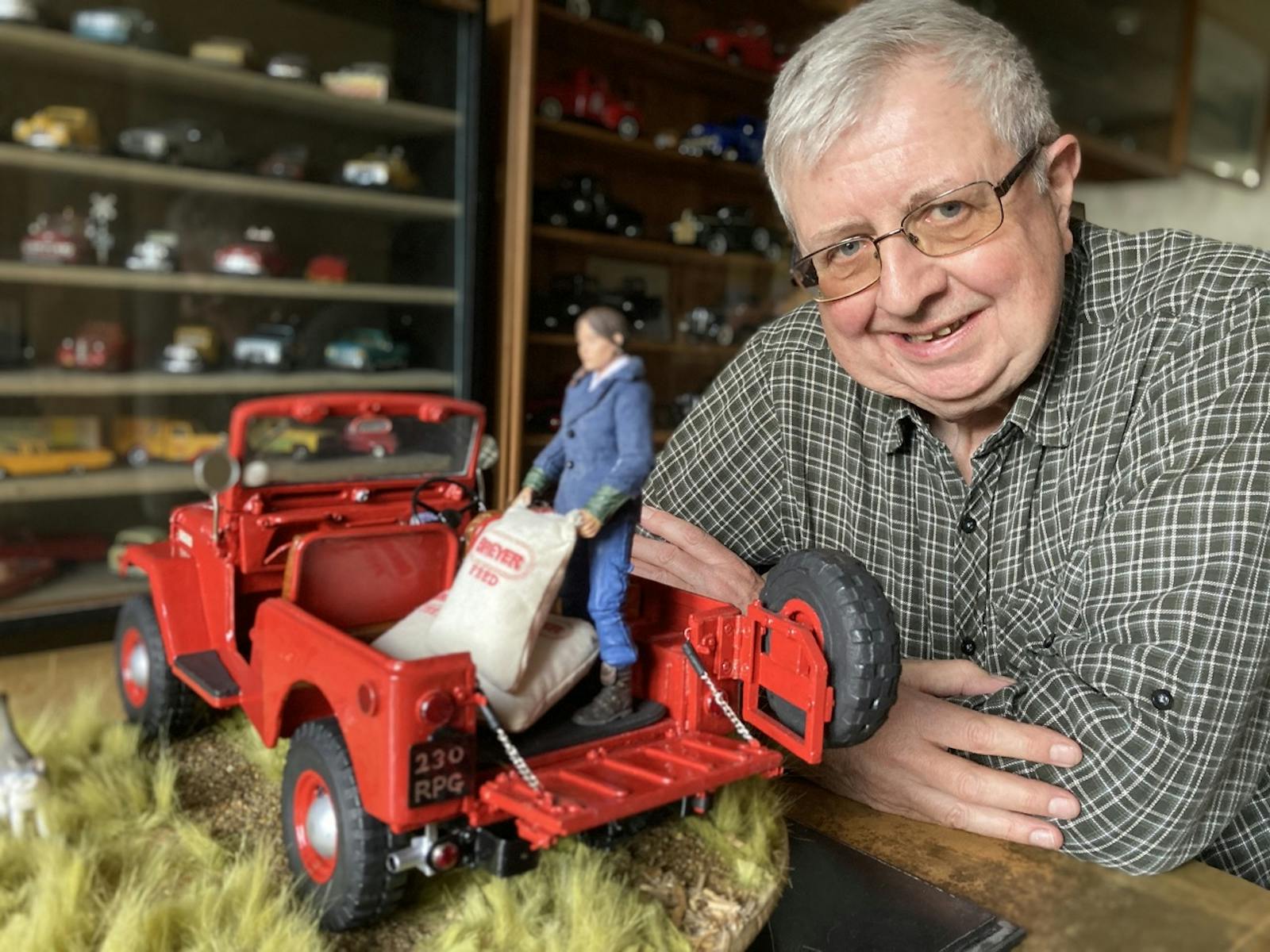“If you love your car, don’t rent it to a studio”: A conversation with “Once Upon A Time In Hollywood” car coordinator Steven Butcher
Ever watch a film and wonder how they come up with all those cool cars for it? We sat down with the picture car coordinator from Once Upon A Time in Hollywood, Steven Butcher, and got a little insight into how all that works.
Matt Grayson: So Steven, I saw your IMDB, very impressive. From your perspective, where did this all begin?
Steven Butcher: It started on a movie called Pontiac Moon. Actually, I don’t keep up my IMDB that well, but on that movie I went in just as driver and ended up becoming one of the mechanics and builders. That was in 1993.
MG: So you started out as a driver and then you went through the process of getting into a picture car coordinator position? Is that like an evolution of things or how does that work?
SB: I like building and fabricating cars, so that was my path. When I was 18 years old, I did my first ground up restoration. Anyway, years later in the ’80s, I was building and drag racing cars. My sponsor, who owned a wrecking yard, had many friends in the film industry. I asked him to hook me up with some of them. I was invited on a set to visit one of our friends. I noticed they were having a problem with a car running in a shot and offered to help. I ran in and fixed it quick so they could get the shot. The transportation coordinator, who is head of all the drivers, thought I would be an asset and hired me on his next show. I drove a truck pulling an actor’s trailer and then helped with cars on the set.

MG: So “Transportation” is picture cars, the big trucks… all that stuff is under one roof?
SB: Yeah, anything on wheels, or has a motor and needs to be driven. The generator and lighting trucks, camera, wardrobe, make up, actors and directors trailers, as well as all the cars on the film which are picture cars.
MG: I know you said you’ve been doing this since 1989. You worked on The Dark Knight Rises and of course now Once Upon A Time in Hollywood. You said you were in racing and then you kind of got involved with some cars on a set here and there but you never really kind of set out to be into the movie car business, it’s just kind of one of those things that happened?
SB: It wasn’t like I wanted to work in the film industry or anything. I grew up in LA and was always around it. I had a girlfriend back in the ’70s and her father was in film. But I wasn’t really looking to work in the industry. I had a job in real estate, but am a car man at heart, so I really wanted to restore cars, build hot rods, and drag race. What I really wanted to do was become a full-time drag racer.
MG: Basically get to play with cars and get other people to spend their money on em?
SB: Ha, ha. Well, if you don’t have the money for everything, you can build for someone else, fulfill their dreams, and still have the satisfaction of creating something. As a first generation drag racer you have to do everything yourself—build the car, race it, and fund it. Trying to get money out of people for sponsorship is tough until you have proven yourself as an established racer. So I kind of stumbled into the film business and thought it was a great niche for me. The great thing about it is you can work your own hours, so being that I had a little shop, I could work at my shop until I was called to go on a show and close my doors at the shop to work on a film. I would go back and forth. Soon, people found out about my knowledge of cars and where to source them and then someone gave me a shot as a picture car coordinator. That can be a department of its own sometimes on a large picture car show.
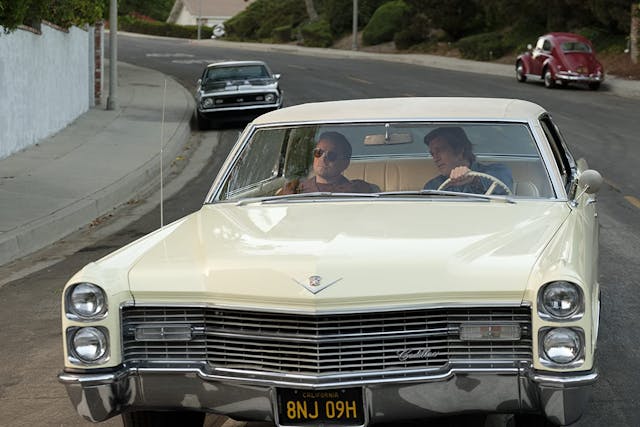
MG: Let’s talk about Once Upon a Time in Hollywood, which was the film you worked on that just recently came out. Everything that I’ve read says a film usually sources between 3 to 500 cars, but you guys actually had to source over 2000 vehicles for this film?
SB: I don’t have the real numbers, but it was something like that. Yes, it was quite a bit because we were establishing LA in 1969 with the streets, curbs, and parking lots filled with cars. If you are filming on Sunset Blvd. there would be at least a hundred cars parked there and driving in both directions, add that times the number of days you shoot there and it adds up to a bunch of cars. We shot in Westwood—that was filled with cars, trucks, and buses. And of course a few freeway scenes that can add up to crazy numbers. Then filling parking lots with background cars adds up.
MG: Can you tell us a little bit about how you source the cars? Do they come from manufacturers or picture car companies or individuals?
SB: So what we do is—I’ll work on, and get all of the hero cars (main players on the film), cars that are driven by the actors and the close up cars. I work with the director for hero cars and their look, and with the production designer for the overall look of the scene with delivery trucks, buses, or anything special to make the shot look good. Then I also use a picture car rental house or a picture car broker. The picture car rental house will build, paint, graphic, and deliver your cars if needed. A one stop shop. A picture car broker has a list of people and their cars registered with them to use in your film. So, say I need 50 cars from them. They would show me 200 or more and I’ll pick out of that. For a period film, if they have mag wheels or modern rims and I need stock, I might still use them, but make them drive by so you don’t see the incorrect details, or put them deep in the shot so you get the look of the car, but can’t make out the mods. You have to cheat sometimes. The director relies on me to know what is period correct for that era, but I’m not always on set, so you have to rely on our guys to know, and they don’t always know what you know, so some slip through the cracks.

MG: So as far as selecting the cars for Rick Dalton or Cliff Booth went, that was director driven, right? I’ve always been curious how do you distinguish which character gets what car, how that works?
SB: So, I’m given a script and I read it and put a character to a car. I read what kind of character he is and try to match it with the car he should drive. If he’s rich, how rich? If broke, how broke? If he was rich and then broke he might have an older rich man’s car that’s now run down or well-kept. You then pick four cars, show them to the director, and he chooses one and the color he wants, or none and you keep looking. But if it’s a director who knows cars or has a particular car in mind, then you still give him options and he will make the final choice. Now on Once Upon A Time In Hollywood, the director happened to choose certain cars cuz he knows cars. The Karmann Ghia was the same type of car used in Kill Bill. He likes to run his cars through different films, along with other things. The Cadillac was from Reservoir Dogs. Another thing is, budget can also drive what you choose. A car might be too expensive because you’re not building just one—but two, three, or more depending on if you are doing stunts or crashes. The director makes the ultimate decision, but we get the fun of sourcing and building them, and matching the car to the character of the actor.

MG: So basically you could have told Cliff Booth that he was going to drive the Bigfoot monster truck and that would have changed his whole character up, right?
SB: If that’s what the director wanted him to drive, then yes. So, actually, going back to Cliff who was a stunt man, that Karmann Ghia has sentimental reasons for the director using it. I had to turn it into a stunt man’s car ’cause he probably would have had an old Porsche 356 or something American with a V-8, but old because he was broke. So we put a hot motor in it. A hot motor is a high performance engine. Did you notice the chrome reversed wheels? They were popular for the time. We took chrome wheels and took off the hubcaps. There’s no stuntman that would ever drive a car with hubcaps. They are the first things to fly off. Ha, ha, ha. So, it was kind of perfect for his character. He was broke and on his way down and probably ended up with some beat up old Karmann Ghia, and threw a hot motor in it because most mechanics or stunt guys wouldn’t care about the car itself—it’s what’s under the hood.
MG: When you have a picture car team, how many roles are on that team? Mechanics, detailers, etc? Can you give us a little insight to that?
SB: Yes, so I’m the picture car coordinator and then I have a picture car captain who will work with the cars on set, depending on how much work we have going that day, while I’m getting stuff ready for the next day’s work. Or, I will start on set in the morning and he will finish out the day if they run long. You always have that second guy to help you. Then you have the mechanics. Your head mechanic and number one guy—he makes them run, and he supervises the mechanics under him. He’s the one you are telling, “These are the cars working this day and at what location, so it’s time to get these cars in the shop and build, modify, or tune up for the shots.” You have set mechanics and you have shop mechanics. The set mechanics stand by on set to fix anything that breaks, or remove a door or windshield for a shot. Whatever is needed, the shop mechanic builds and preps the cars for set. Then you have service men who get parts, detail the cars, or do lighter mechanical work for cars working later.

MG: And those are the shop guys?
SB: Yeah, the shop guys are a mixture of mechanics and service men. The mechanics can get too busy building, so their servicemen can pick up the slack running for parts, putting on mirrors or removing them, washing cars if needed. A lot of times we leave a little dust on the cars because they want the realistic look of an everyday car and they don’t want the glare from shiny paint even on a car that’s supposed to look nice. They sometimes dull it down so they don’t get reflections and hot spots when filming.
MG: If someone wanted to get into the picture car business, what would be a good way for them to go about it? What would be a first step?
SB: Well, here is the first rule of thumb: If you love your vehicle don’t rent it to the studios. If you just want to see your car in a film that’s fine, but other people are going to be driving your cars. If you want to do this, you can register your car online with a picture car broker and he will represent your car. You send him pictures and where you are located, and when a film comes to your town, there’s a good chance you could rent your car if that’s what they are looking for. If you want to be a picture car coordinator you have to belong to our Local 399 Hollywood Teamsters Union. Once you are in, you’re gonna have to pay your dues of working and proving to someone you can do the job, and then someone has to give you a break. You can also buy a few cars specifically for film. Register as an extra with a car, or cars. Make sure they run good and they are automatics. A lot of people don’t drive sticks.

MG: Let me ask you a question about Once Upon A Time in Hollywood. I watched it a bunch of times and there’s lots of really great cars in there. I’m a van guy and I saw flat glass Chevy vans, a second-gen Chevy van, a really nice second-gen Econoline all these cool vans but then about 15 minutes into the film, there’s a dumpster diving scene outside a supermarket with the girls and there’s what looks like a 98 Econoline that goes ripping through the background? What happened there?
SB: So whenever something like that happens, it’s called a bogey. They lock down the streets and shoot the scene. Someone gets through from somewhere. That van slipped through and was probably caught, but was left in because it was the best or the only shot. It happens all the time. They can CG it out in post, but we shot this movie on film and it’s not easy to do. It shows up more on a period film than a contemporary one, but it just happens. And you know what? It’s good fodder for people to talk about if you know what I’m saying.
MG: Cool cool. Do you think it’s easier to get into this industry now compared to how it used to be?
SB: Getting into renting your car is much easier now because in the past there was no internet or social media. It was all word of mouth, or the trade papers. In the past you went into a town to shoot and you put out a “calling all cars” on the local radio station that they would announce over the air if you want to put your car in a movie. They did that for lots of movies back in the day, especially period films like American Graffiti. When you are doing a contemporary film, you could walk down the street or go in a parking lot and pick out a few cars, or shoot what’s existing. But if you are doing period and looking for something special, you have to pound the pavement. A little secret that I used to do when working on a period piece—I would drive around the location and spot any vintage cars in the neighborhood and keep them in mind, so if the director says “Hey man, I need an extra car here. How quick can you get one?” I may have it. Those are tricks you learned as you went along. I worked with these directors and after wrap they would call me at the hotel and say they want a dump truck on set first thing in the morning. “We have faith in you, do the best you can.” So I get in my truck in the middle of the night and drive around industrial areas looking in yards with dump trucks, go to bed, get up at 4 in the morning to get to that place first thing when they open to try and rent the truck and then get it to set on time. It can be tough.
So there you have it—from hero cars to bogeys. Now you’ll know what to look for in that Tarantino film—including a ’98 Econoline!
